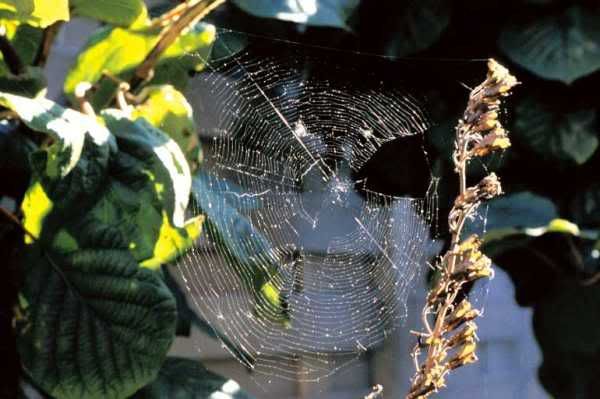"Oh what a tangled we we weave, when first we practise to deceive" is from Sir Walter Scott's epic poem, Marmion and being one of Europe's most famous literary figures, Scott was an integral part of my early schooling in Great Britain. Apropos is that Scott published anonymously and even after widespread success, he enjoyed prolonging the mystery and quickly acquired the nicknames "The Great Unknown" and "The Wizard Of The North".
Marmion tells of the designs of Lord Marmion to lure and woo a wealthy heiress, Clara de Clare, who was betrothed to Sir Ralph De Wilton. The scheme involved an attempt to discredit De Wilton and was orchestrated by Marmion and a nun, Constance, who secretly had designs that her assistance would win back Lord Marmion's affections as well. The whole scheme goes horribly awry. Constance's hopes of reconciliation are dashed; she is sent to the convent of St. Hilda at Lindisfarne for breaking her vows and takes her revenge by proving De Wilton's innocence. In the end, Lord Marmion is killed at the battle of Flodden Field; De Wilton fights with distinction, regains his honour and ends up marrying Clara.
An intriguing story line, but not the reason for the selection. No, I was thinking along a more biological plane for this journal.
The proteinaceous, silky filament that forms an intricate and tacky structure upon which a spider's prey becomes entangled is both an effective method of hunting and a marvel in design. The "silk filament" is secreted from glands on the spider's abdomen called spinnerets. Various glands produce filament with slightly different properties. Although many filaments that comprise the web are highly sticky, the spider designs the structure alternating glands to provide occasional lines leading into and around the hub that are not sticky.
Marmion tells of the designs of Lord Marmion to lure and woo a wealthy heiress, Clara de Clare, who was betrothed to Sir Ralph De Wilton. The scheme involved an attempt to discredit De Wilton and was orchestrated by Marmion and a nun, Constance, who secretly had designs that her assistance would win back Lord Marmion's affections as well. The whole scheme goes horribly awry. Constance's hopes of reconciliation are dashed; she is sent to the convent of St. Hilda at Lindisfarne for breaking her vows and takes her revenge by proving De Wilton's innocence. In the end, Lord Marmion is killed at the battle of Flodden Field; De Wilton fights with distinction, regains his honour and ends up marrying Clara.
An intriguing story line, but not the reason for the selection. No, I was thinking along a more biological plane for this journal.
The proteinaceous, silky filament that forms an intricate and tacky structure upon which a spider's prey becomes entangled is both an effective method of hunting and a marvel in design. The "silk filament" is secreted from glands on the spider's abdomen called spinnerets. Various glands produce filament with slightly different properties. Although many filaments that comprise the web are highly sticky, the spider designs the structure alternating glands to provide occasional lines leading into and around the hub that are not sticky.

The spider lays in wait while the tacky filament, sparing the spider much energy to hunt it down, ensnares prey. What' success!
But if the web is so highly effective, why doesn't the spider, himself, become ensnared? Familiar with the design of carefully placed signal lines and sufficiently agile, the spider simply waits for the prey to alight. Once ensnared, the prey struggles to get free sending vibrations across the structure which signals the spider to navigate its way across the web along the signal lines to champion in the hunt.
Presto! Careful design, planning, and watchful waiting on the part of the spider prove not only to be a superbly efficient means to hunt, but also an untimely demise for unwitting prey.
This is a story of such a web, those that preyed there, and me...............

1 comment:
Very good article, well written and very thought out.
Post a Comment